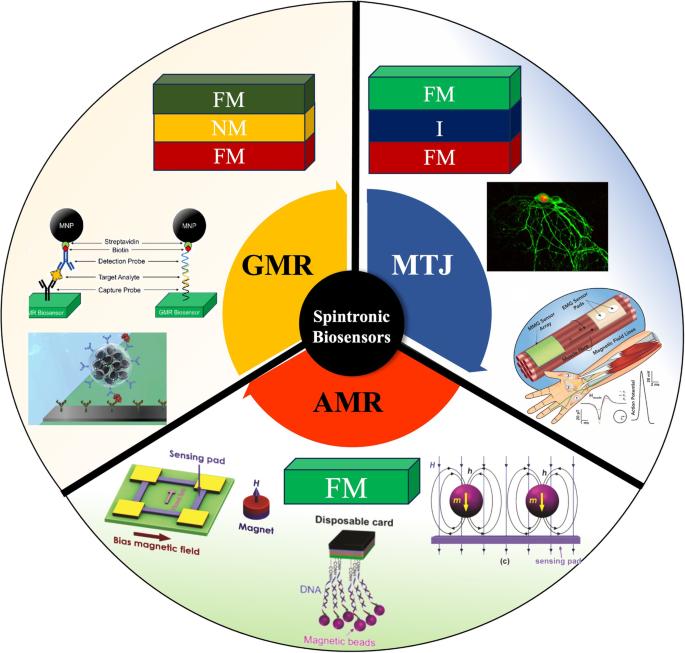Spintronic devices for biomedical applications
引用次数: 0
Abstract
In the past decade, there has been a significant rise in the development of novel spintronic device architectures specifically designed to meet the demands of diverse biomedical applications. These advancements have notably focused on enhancing various bioassay detection techniques, including magnetocardiography and neural signal recording. Through collaboration within the spintronics community, these devices are rapidly transitioning from laboratory prototypes to practical applications, catering to diverse biomedical applications and benefiting both researchers and medical practitioners alike. In this review, we comprehensively explore the biomedical applications of spintronic devices, due to their inherent sensitivity to external magnetic fields, ease of fabrication into large arrays of nano/micro-sized devices within confined spaces, resilience under harsh environmental conditions, and high repeatability. Established spintronics devices that exploit various magnetoresistive effects have already been extensively deployed as magnetic biosensors for disease diagnosis, medical imaging, and bio-magnetic field detection, offering superior sensitivity and robustness. This review aims to provide peers with an up-to-date overview of spintronic devices in biomedical contexts while also commenting on future research trends and challenges. With advancements in nano/microfabrication techniques enhancing device robustness and magnetic field sensitivity, it is foreseeable that these spintronic devices could catalyze revolutionary transformations in healthcare.

用于生物医学应用的自旋电子器件
在过去十年中,为满足各种生物医学应用需求而专门设计的新型自旋电子器件架构的开发有了显著的增长。这些进步主要集中在增强各种生物检测技术上,包括磁心动图和神经信号记录。通过自旋电子学界的合作,这些设备正迅速从实验室原型过渡到实际应用,满足了各种生物医学应用的需求,使研究人员和医疗从业人员都受益匪浅。在这篇综述中,我们将全面探讨自旋电子器件的生物医学应用,因为它们对外部磁场具有固有的敏感性,易于在有限的空间内制造成大型纳米/微米级器件阵列,在恶劣的环境条件下具有很强的适应能力,并且具有很高的可重复性。利用各种磁阻效应的成熟自旋电子器件已被广泛应用于疾病诊断、医学成像和生物磁场检测的磁性生物传感器,具有卓越的灵敏度和稳健性。本综述旨在为同行提供生物医学领域自旋电子器件的最新概况,同时对未来的研究趋势和挑战进行评论。随着纳米/微细加工技术的进步,这些自旋电子器件的坚固性和磁场灵敏度都得到了提高,可以预见,它们将推动医疗保健领域的革命性变革。
本文章由计算机程序翻译,如有差异,请以英文原文为准。
求助全文
约1分钟内获得全文
求助全文

 求助内容:
求助内容: 应助结果提醒方式:
应助结果提醒方式:


